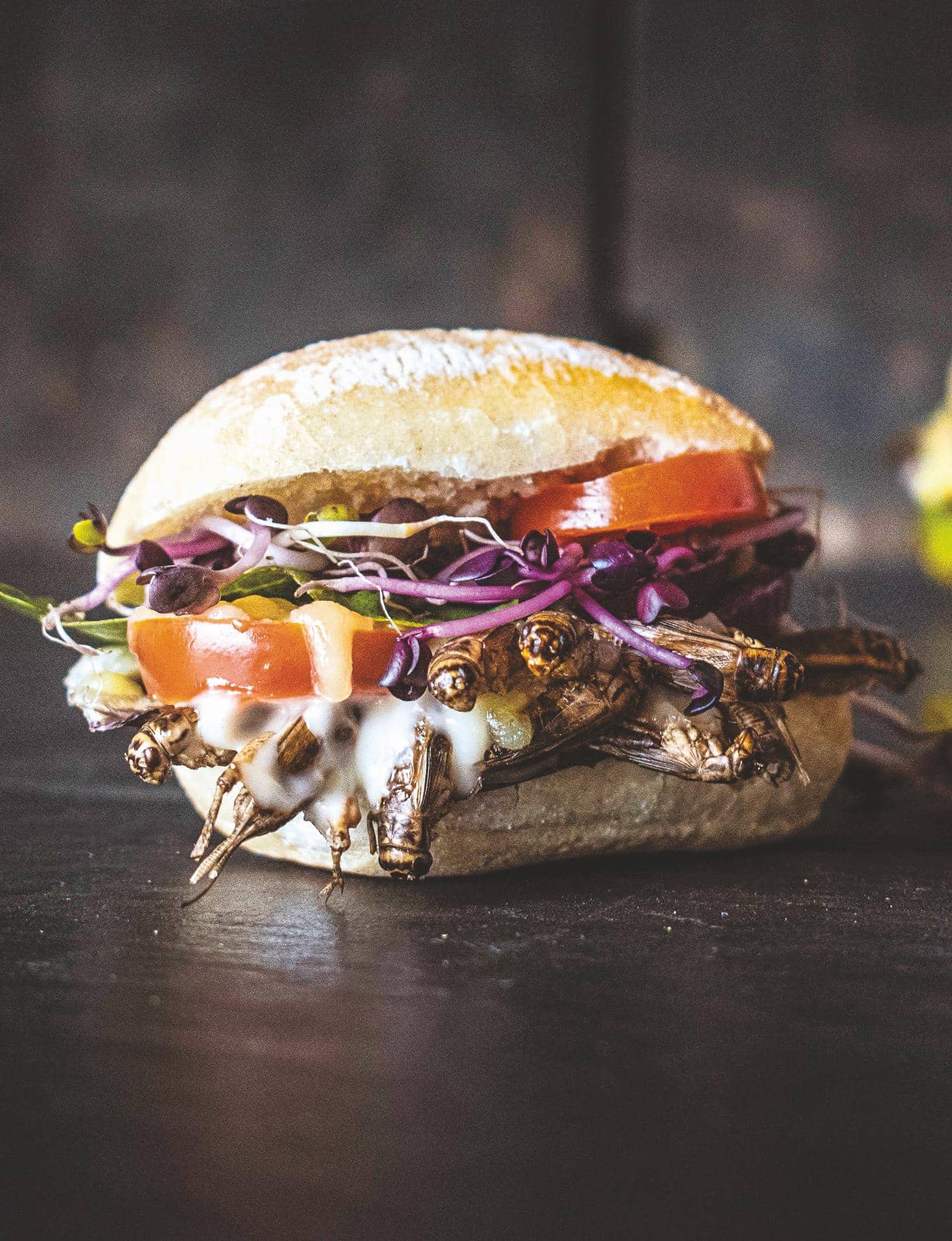
Cockroaches have long been on their traditional menus. More than 100 farms supply the market, with the biggest in Xichang in the north of the country, where six billion cockroaches a year are bred in dimly lit concrete bunkers at 30°C. They’re fed on garbage and are proving a waste-disposal weapon for the country.
The ideal food species is the American cockroach, Periplaneta americana. Twice fried in hot oil in a wok, it offers a crispy shell and soft, succulent innards said to resemble cottage cheese, with an earthy taste and a hint of ammonia. Volumes go to pharmaceuticals to treat stomach and respiratory problems and cockroach preparations are prescribed as a vitamin supplement and for fighting cancer, AIDS and baldness. For medicinal purposes, 40 million Chinese patients consume a crushed cockroach potion said to taste vaguely sweet and smell of fish, yet it’s cockroaches as finger food and on street-food skewers that really make the tourist blink.
Mercifully, none of Britain’s three cockroach species is thought suitable for harvesting. The Oriental likes the cool, damp conditions of basements, drains and outside bins. The brown-banded is adaptable. The third and most familiar, the German, seeks the warmth and humidity of kitchens and bathrooms. It’s ubiquitous and prolific, the one you tread on when you crunch your way to the fridge in the dark across the floor of an infested kitchen in an old house, the one crawling on every bit of furniture, every piece of hanging washing, every hanging towel when you switch on the light. Smooth surfaces present no barrier, as its feet have tacky patches. Come the daylight and not an antenna is to be seen. Blattella germanica has retreated behind the cooker range, the old fireplace, the wainscot and anywhere to which a crack or gap gives access (blatta is Latin for an insect that shuns light).
Denne historien er fra October 16, 2019-utgaven av Country Life UK.
Start din 7-dagers gratis prøveperiode på Magzter GOLD for å få tilgang til tusenvis av utvalgte premiumhistorier og 9000+ magasiner og aviser.
Allerede abonnent ? Logg på
Denne historien er fra October 16, 2019-utgaven av Country Life UK.
Start din 7-dagers gratis prøveperiode på Magzter GOLD for å få tilgang til tusenvis av utvalgte premiumhistorier og 9000+ magasiner og aviser.
Allerede abonnent? Logg på

Give it some stick
Galloping through the imagination, competitive hobby-horsing is a gymnastic sport on the rise in Britain, discovers Sybilla Hart

Paper escapes
Steven King selects his best travel books of 2024

For love, not money
This year may have marked the end of brag-art’, bought merely to show off one’s wealth. It’s time for a return to looking for connoisseurship, beauty and taste

Mary I: more bruised than bloody
Cast as a sanguinary tyrant, our first Queen Regnant may not deserve her brutal reputation, believes Geoffrey Munn

A love supreme
Art brought together 19th-century Norwich couple Joseph and Emily Stannard, who shared a passion for painting, but their destiny would be dramatically different

Private views
One of the best ways-often the only way-to visit the finest privately owned gardens in the country is by joining an exclusive tour. Non Morris does exactly that

Shhhhhh...
THERE is great delight to be had poring over the front pages of COUNTRY LIFE each week, dreaming of what life would be like in a Scottish castle (so reasonably priced, but do bear in mind the midges) or a townhouse in London’s Eaton Square (worth a king’s ransom, but, oh dear, the traffic) or perhaps that cottage in the Cotswolds (if you don’t mind standing next to Hollywood A-listers in the queue at Daylesford). The estate agent’s particulars will give you details of acreage, proximity to schools and railway stations, but never—no, never—an indication of noise levels.

Mission impossible
Rubble and ruin were all that remained of the early-19th-century Villa Frere and its gardens, planted by the English diplomat John Hookham Frere, until a group of dedicated volunteers came to its rescue. Josephine Tyndale-Biscoe tells the story

When a perfect storm hits
Weather, wars, elections and financial uncertainty all conspired against high-end house sales this year, but there were still some spectacular deals

Give the dog a bone
Man's best friend still needs to eat like its Lupus forebears, believes Jonathan Self, when it's not guarding food, greeting us or destroying our upholstery, of course